How NYC's Trans Beauty Clinic is transforming lives from the inside out
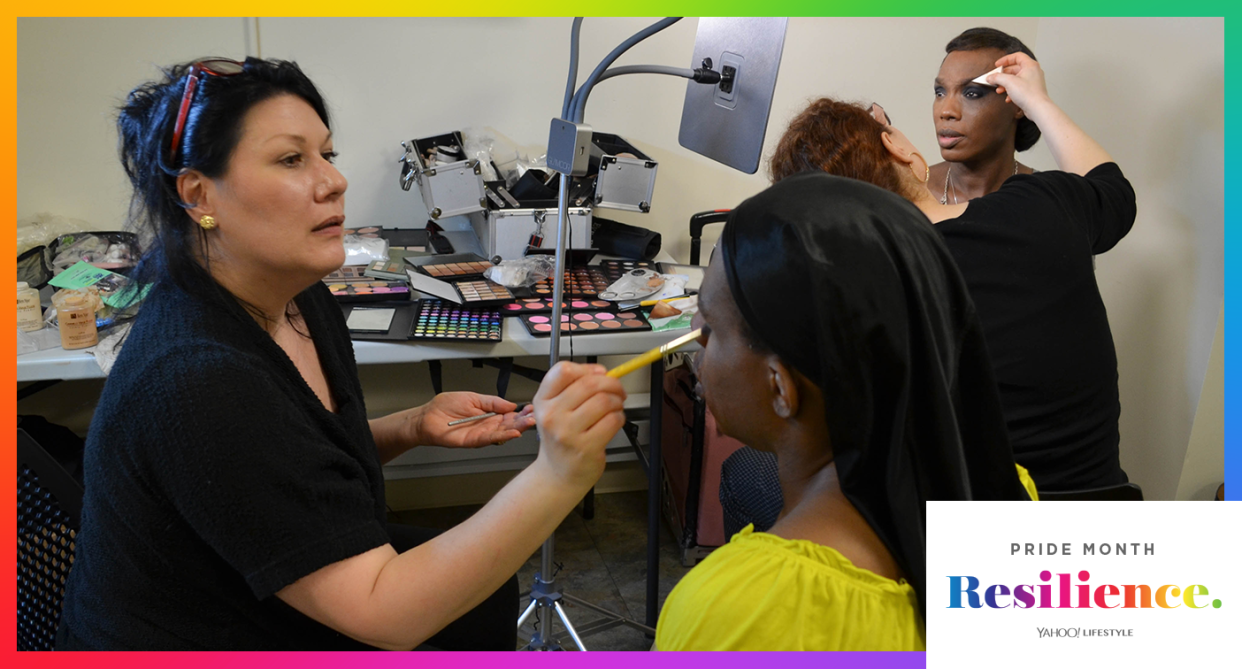
Welcome to Yahoo Lifestyle, Pride Edition, commemorating June — Pride Month — with a collection of stories celebrating the resilience of LGBTQ people, from celebs, including Adam Rippon and Karamo Brown, to trans women and men discovering their inner power through a unique beauty clinic, to queer youth receiving vital support from their gay elders after aging out of the foster system. And so, as they shout in the streets: “We’re here, we’re queer — get used to it!”
On a Saturday afternoon, in a small room located off a faux catwalk nestled within the Church of the Village in New York City, four professional makeup artists have set up shop. Lights, brushes, sponges, trays of multicolored eyeshadows, pans and tubes of concealers and foundations, grooming products, and clippers are everywhere. The space is not glamorous — but it is safe. This is not just any makeup clinic. It is the Trans Beauty Clinic, a monthly interactive, hands-on beauty and grooming session for transgender men and women.
The Trans Beauty Clinic was started by celebrity hair and makeup artist Birgitte Philippides-Delaney in 2015. Philippides-Delaney had been a longtime West Village resident and LGBT activist, and she had a feeling that her knowledge and services would be particularly useful to the transgender community.
“I had heard from so many transgender men and women that they are marginalized even within the gay and lesbian community. They are sort of the forgotten ones,” she said.
Heeding the call, she walked over to the Lesbian, Gay, Bisexual and Transgender Community Center one night and met Cristina Herrera, who runs the center’s Gender Identity Project. Herrera became a mentor of sorts, offering guidance on starting a Facebook page and helping to spread the word. The first Trans Beauty Clinic took place at the center in October of that year. A few weeks later, Philippides-Delaney met make-up artist and grooming expert Todd Harris at a charity event. Three weeks after that, Harris volunteered at his first Trans Beauty Clinic and he’s partnered with Philippides-Delaney ever since.
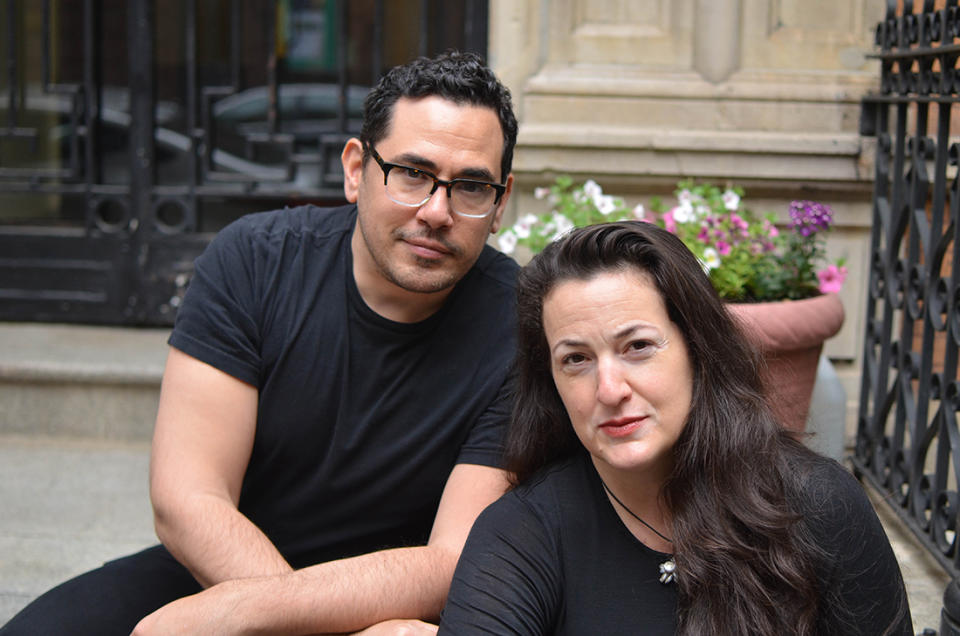
“For gay men and lesbian women, there are so many charities that are heavily funded, and there are so many options available to them,” he said. “The transgender community is so underserved. There are really not that many outlets to help them, especially for the [type of] work that we do. So that was really my passion to get involved with it.”
Since then, they have done clinics at safe spaces around the city, including the center and Sylvia’s Place, an emergency drop-in shelter. The clinics are free to attend and are funded solely by Philippides-Delaney and Harris. So far, they’ve helped an estimated 100 people in person, and many more online via tutorials that are posted on their Facebook and Instagram pages.
While other transgender-focused beauty offerings are available — including Washington, D.C.’s Makeovers with Elizabeth Taylor, New Jersey’s Le Femme Finishing School, and Sephora’s Bold Beauty for the Transgender Community class — the Trans Beauty Clinic stands alone for a number of reasons. It’s the only endeavor that is not-for-profit, and it exists to serve the community — providing free classes, free product, and a safe space. “Our classes are private and based more on self-esteem and confidence-building than on picking full-coverage foundation,” said Harris. Philippides-Delaney added, “The transgender community has a high rate of homeless men and women who would not feel comfortable in a swanky [retail store]. We serve that community. Most of our clients could never afford [high end] prices. They are just getting by. They come to a food pantry and then afterwards they come upstairs and see us.”
There’s also a real camaraderie at the Trans Beauty Clinic, with attendees swapping beauty tips, providing moral support to one another, and offering insight and suggestions on navigating the levels of transitioning. “I feel like we have in a way created a community where everyone who comes to our events is really supportive of one another,” said Harris. “We’ve had really wonderful things like older trans women will bring younger trans daughters to class. You can see the pride in their eyes that they’re bringing someone else and someone else is learning the skills.”
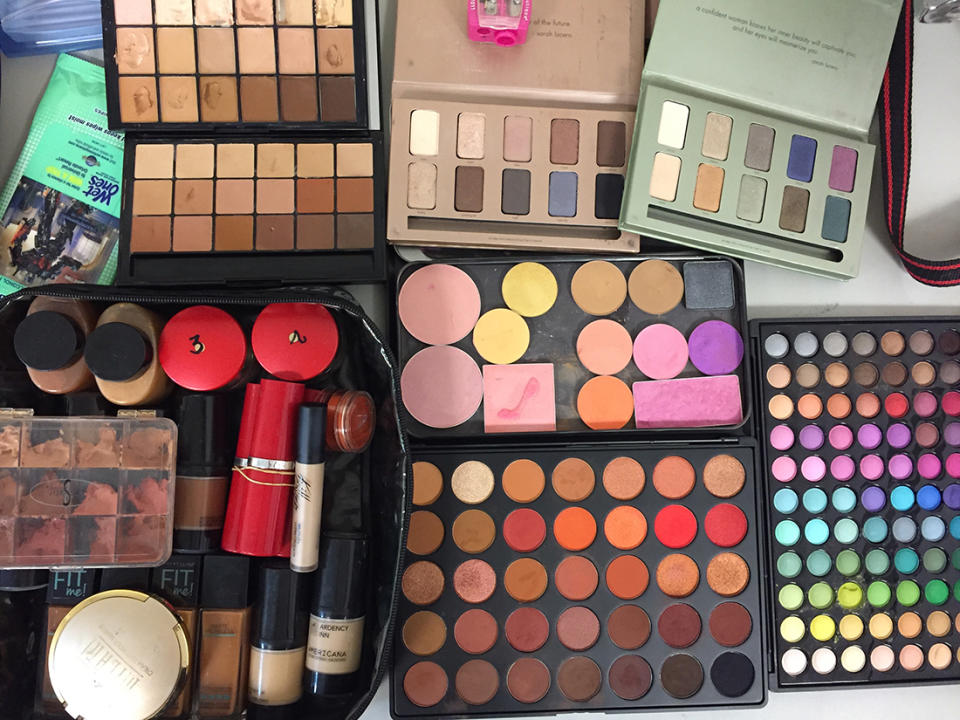
The response from the larger beauty industry has been robust, with companies like Antipodes, Milani, Hot Tools, Andis, and Alcone sponsoring via in-kind product donations. Actress and advocate Susan Sarandon has given them product. A number of high-profile hair and makeup artists have already volunteered at the clinic, and many more have expressed interest in helping. Long-term plans include becoming a registered nonprofit organization and developing a national training program so that Trans Beauty Clinics can be facilitated in safe spaces throughout the country.
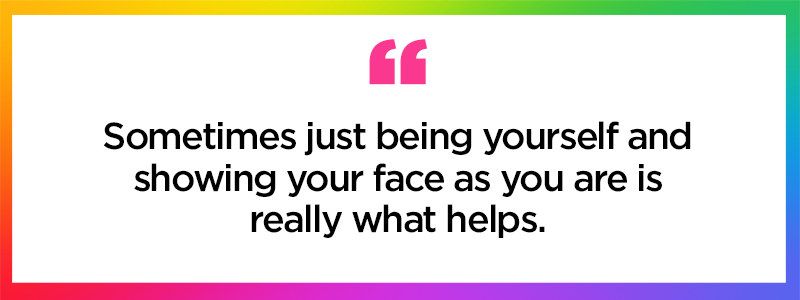
At the clinic, trans men and women learn a variety of things about beauty and grooming. Skin care basics are explained, from cleansers and masks to the importance of moisturizers. Women learn about proper makeup application, how to choose the right colors, how to use concealer, how to apply lashes, and more. The goal is to create a natural look that can carry people throughout all aspects of their day. Whenever possible, attendees leave with products and tools that they may have worked with that day. A recent clinic included such items as facial cleanser, eyebrow-shaping spoolie brushes, and Hot Tools curling irons.
“Sometimes the idea of femininity to people is really just big lashes, big shadow, red lips, contoured, and more is more,” said Harris. “But when you’re trying to enter the workforce and the world and to be part of it, sometimes just being yourself and showing your face as you are is really what helps.”
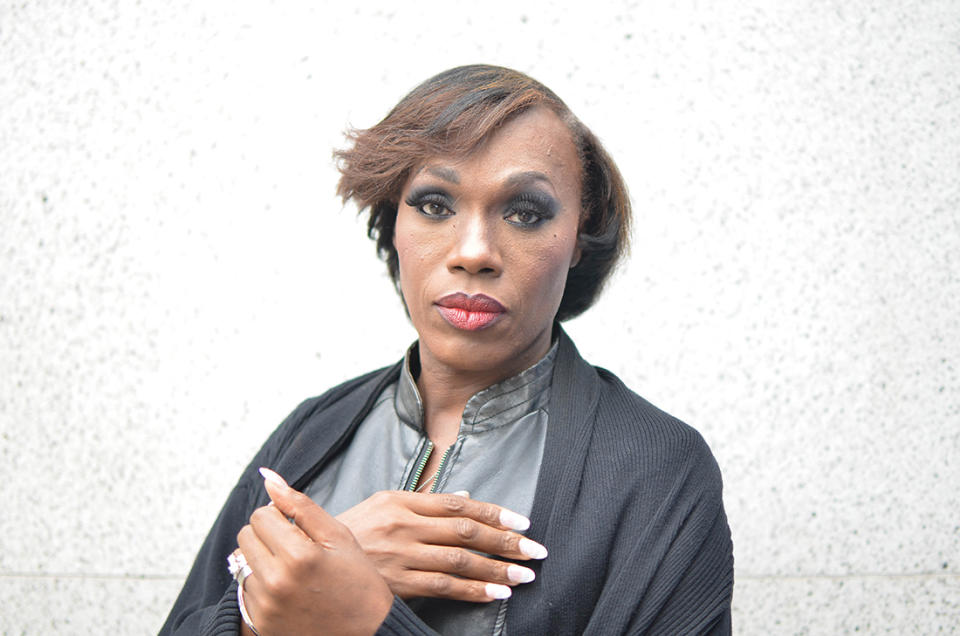
Attendee Grace Detrevarah concurs. “I was packing it on,” she said. “And these professional people showed us how less is more. And that was the truth!”
Detrevarah grew up in Detroit, an only child with both parents working in the auto industry. She knew who she was from an early age. “When I look back on it now, I was somewhat of a revolutionary in my own family because I don’t have any of those stories like I see with my peers where they conformed,” she said. “I never conformed. The discomfort came for everybody else. It was never for me because I just kept living my truth.”
When it came to makeup, Detrevarah feels lucky to have had help from cousins and the support of one particular aunt. She remembers visiting the aunt’s home and sneaking off to try her mascara. She forgot to close the door and the aunt walked in. Rather than scold or criticize, the aunt came up behind her and said, “No, baby, you do it this way. Now doesn’t that look better?”
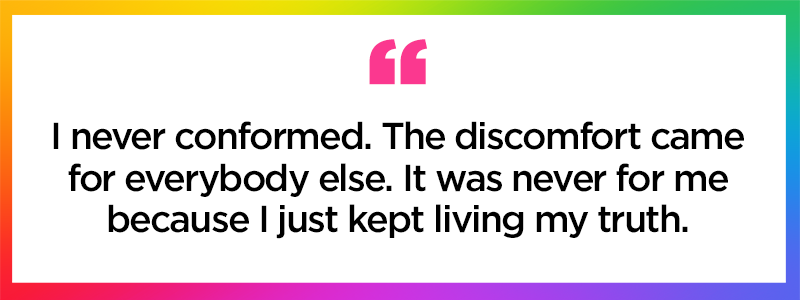
“I love her for it. She has no idea as a little child how comforting and affirming that can be,” she said. “For a child to just live in that truth, even if the world and your family is naysaying you to death.”
Not everyone is as lucky.
“Cisgender men and women, from a very early age, are given all kinds of feedback about grooming, from parents, friends, and it’s hard. It’s hard to learn,” said Carolyn Wolf-Gould, MD, a family doctor whose practice in Oneonta, N.Y., has become a beacon for the transgender community in upstate New York and the surrounding area. “If you have none of that and are expected to learn it in an environment that can often be hostile and not affirming, that can be devastating.”
For the transgender community, the devastation goes well beyond marginalization and a lack of acceptance. According to the 2015 U.S. Transgender Survey (USTS), conducted by the National Center for Transgender Equality, the transgender community faces pervasive discrimination, verbal harassment, sexual assault, joblessness, homelessness, and poverty. Forty percent of the survey respondents had made at least one suicide attempt in their lifetime. That’s nine times higher than the national average.
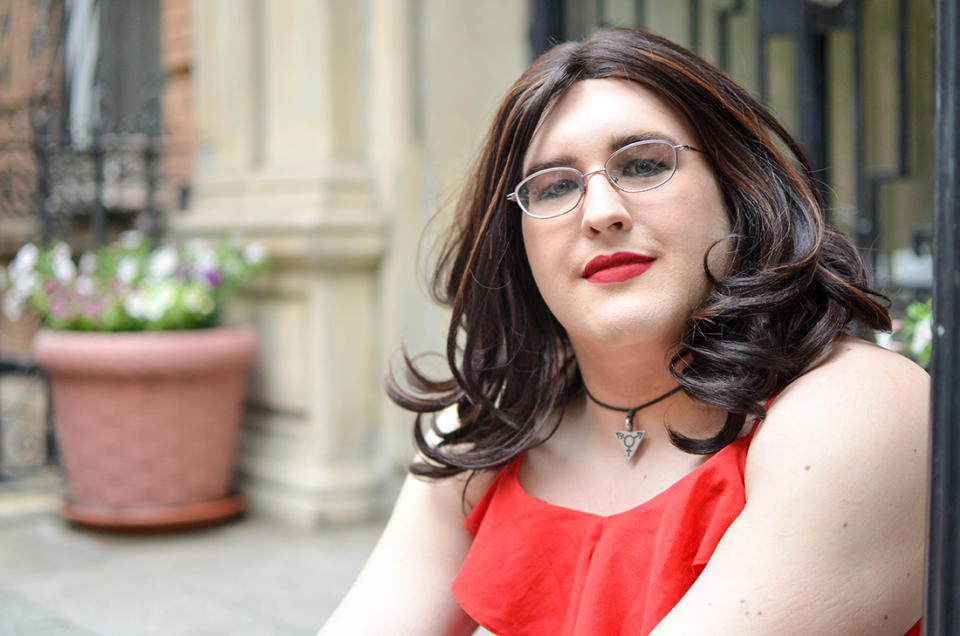
Many of these stats hit close to home with Trans Beauty Clinic attendee Tiffany Miles. She experienced varying degrees of familial support upon coming out as transgender in rural Alabama but not where it counted most, from her paternal grandparents. After a horrible run-in with her grandmother one afternoon that ended with her grandmother screaming that no one would ever hire her because she was transgender, Miles spent the rest of the day buried in YouTube videos. That night she stood at the kitchen sink in her father’s house and held a knife to her wrist. “I looked down at my wrist and saw what I was doing, and I was like, ‘No, that’s too easy,’” she said. “I put it back into the dish drainer, I walked back to my room, and I lay down on my bed and I just cried for the rest of the night.” The next morning she began thinking about her options. “My two options are: leave and find a better place to live or suicide. And I like living too much to die.”
At 31, Miles left on foot. That night, she slept under a bridge in Tuscaloosa. She made a stop in Montgomery before ultimately heading for New York City in January 2017, where she spent over a year in the shelter system and jobless. Maybe grandma was right.
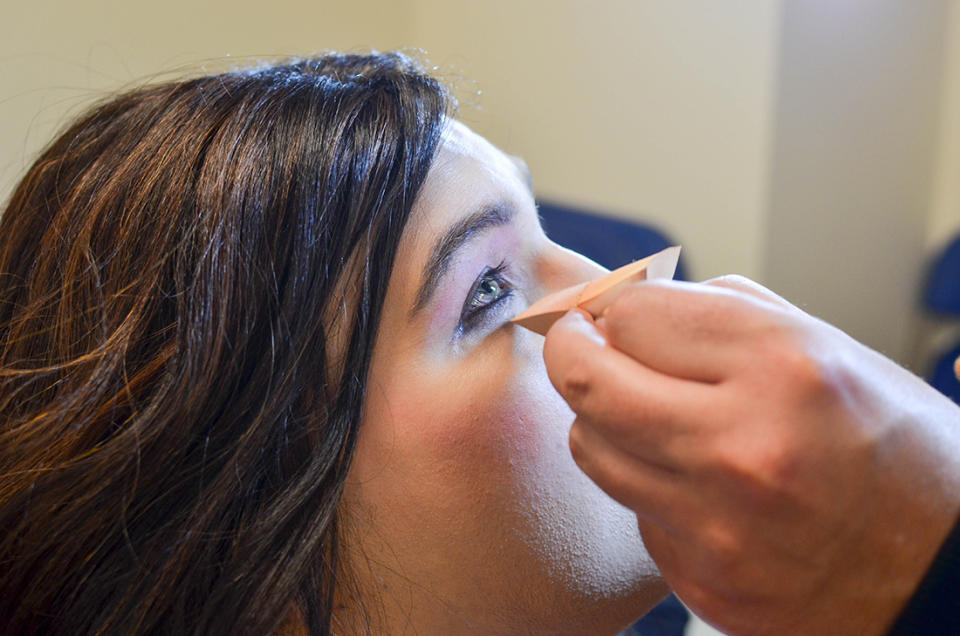
A few months after she arrived in New York, a friend dragged her to the Trans Beauty Clinic. “It’s because of the Trans Beauty Clinic that I am more able to confidently do my makeup. This is what I looked like when I first came to New York,” she said, whipping out her driver’s license. “And this is what I look like now. Night and day. I was told I look like Julia Roberts. Except without that big ol’ mouth of hers.”
On Valentine’s Day of this year, Miles was hired by CVS. “For the community just a block away to hire her, when the statistics are so enormous? It’s so difficult for someone like Tiffany to get a job, and they hired her,” said Philippides-Delaney. “And they enjoy working with her and she’s doing a great job.”
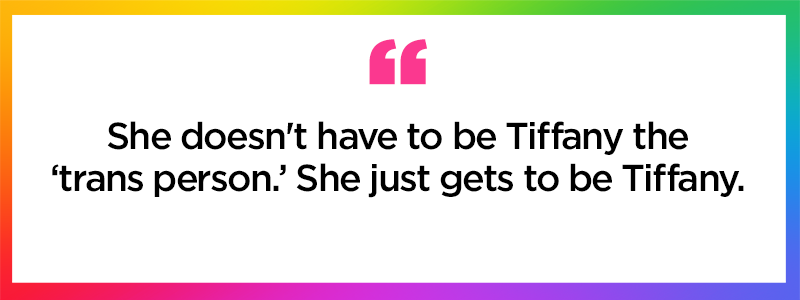
The USTS pegs the unemployment rate for respondents at 15 percent, which is three times higher than that of the general U.S. population. For transgender men and women of color, the unemployment rate is even higher, at 20 percent.
“The blessing of it is that she gets to just be Tiffany,” Harris said. “She doesn’t have to be Tiffany the ‘trans person.’ She just gets to be Tiffany, and I think that’s all she really wants. I think that’s all that any trans person wants to be, just themselves.”
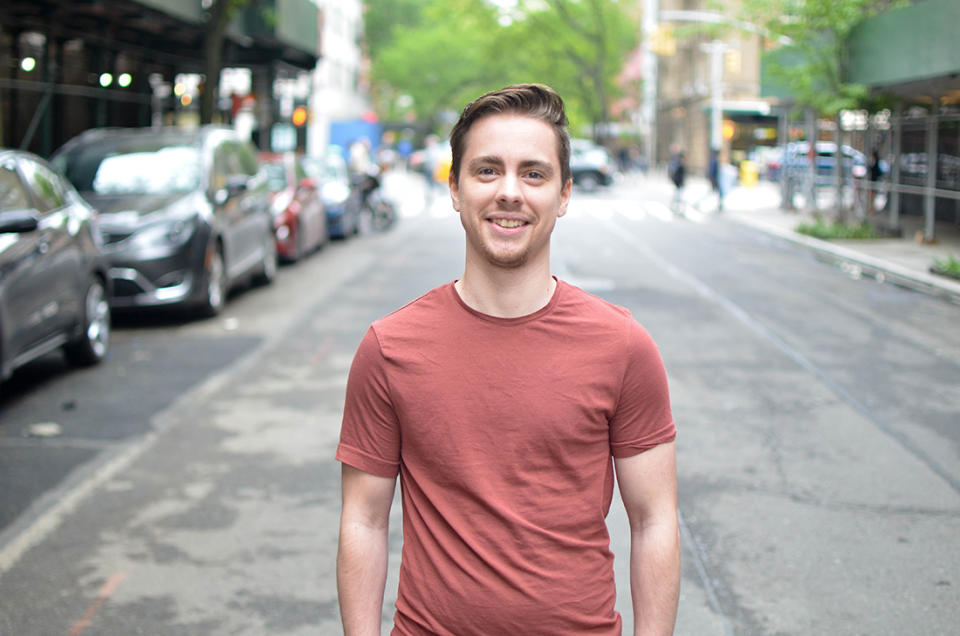
For Trans Beauty Clinic attendee Simon Chartrand, as with the others, the journey to be “just himself” has come in stages.
Chartrand grew up in New York’s Hudson Valley. He always knew something was off, but didn’t have the vocabulary to explain what it was. One day, while riding in the car with his mother, he told her there was something wrong and he needed to go to the hospital, because that was where you went when something was wrong. “I knew I didn’t fit in and who I was was wrong, and the only way to correct that was to eliminate myself,” he said. “So when I was 9 years old, I wanted to die, and I knew there was something wrong with that.” Since he couldn’t find the words to explain what was happening, he just dropped it. “I stayed silent.”
It wasn’t until he got to college that Chartrand began to understand what he’d been feeling for so long. Once things made sense, he began the gradual process of becoming his true self. It started with clothing. He only had enough money for rent and food, so he used some of his food money to buy things like $3 men’s T-shirts. He bought beanies to cover his long hair, which he began cutting shorter and shorter. One day a professor took Chartrand to a hairdresser friend who gave him a proper haircut. “Being taken seriously, it’s kind of like when you see the videos of cows coming outside for the first time when it’s spring,” he said. “They start jumping. It’s a relief and it’s natural and you know it’s right. So that’s what I had.”
Chartrand continued to learn all that he could about grooming and styling via online forums, websites, and blogs. The challenge, especially pre-hormones, was to look transmasculine rather than butch feminine.
“The other statistic is that it is expensive to transition,” said Philippides-Delaney. “A lot of the trans men and women who are coming are not able to have operations, so doing things that don’t cost that much with makeup and hair can help them.”
After hormones, there were things for Chartrand to learn about his changing skin type and texture and how to deal with facial hair. Enter the Trans Beauty Clinic.
“I saw the word ‘trans’ and was like yes!” he laughed. His skin had become rougher and oilier. At the Trans Beauty Clinic, he learned about proper cleansing and moisturizing, and other tips like changing his pillowcase more often. He also learned the benefits of using clippers instead of a razor to have more nuance and control over trimming his facial hair.
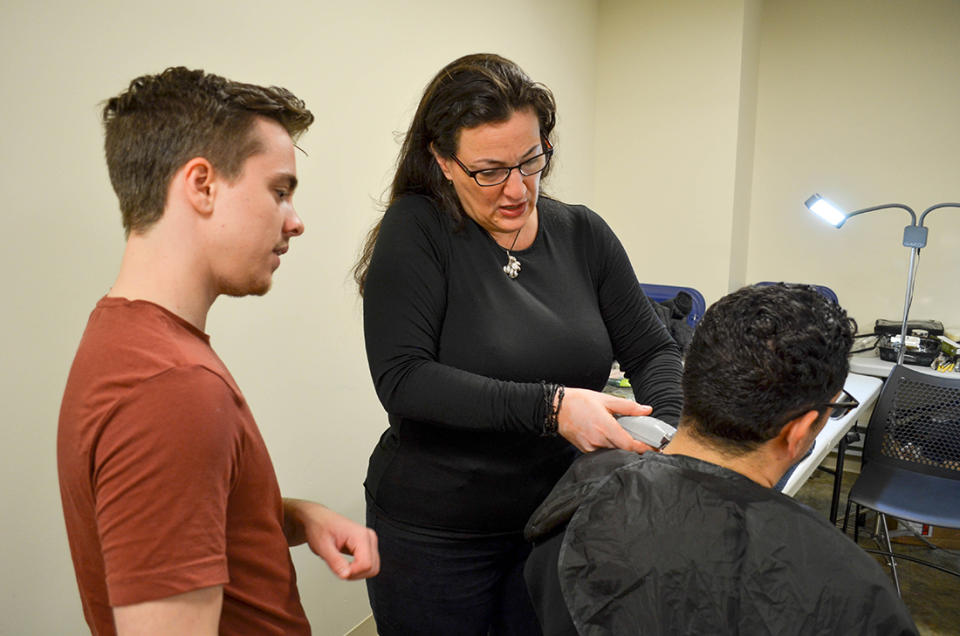
On this day, Philippides-Delaney spends the whole session with Chartrand. They begin with brows. Philippides-Delaney tweezes the middle section and explains the benefits of brow gel. They talk about how he’s been cleansing. Harris offers suggestions on exfoliators and masks. Chartrand is shown how to use a bit of concealer to hide blemishes. Another problem is that his facial hair has been growing in unevenly. One side is coming in like crazy and the other can barely keep up. Philippides-Delaney shows him how to subtly fill in and blend the patchy areas to create a stronger look. They move on to hair, cleaning up the growth that occurs between trips to the barber, clipping the nape of the neck, and trimming around the ears. Then, a little bit of styling product to pull the whole look together.
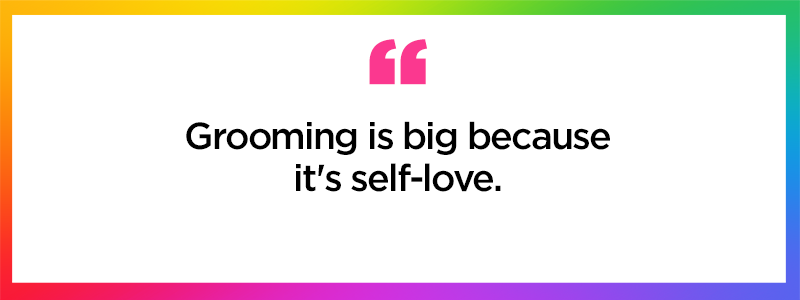
At the end of the day, Chartrand looks at himself in the mirror and begins tearing up.
“Grooming is big because it’s self-love. When you spend a lifetime of not even being able to look in the mirror, to go to a clinic and look good … it’s revolutionary.”
Read more from Yahoo Lifestyle:
‘Why is June so gay?’ and other Pride 101 facts you need to know
5 YouTube Drag Queens Who’ll Help You Look Beat for the Gods
Follow us on Instagram, Facebook, and Twitter for nonstop inspiration delivered fresh to your feed, every day.
